գործողութիւն»: Արցախի սահմանի ողջ երկայնքով թշնամին կիրառեց հրետանի, հրթիռներ եւ անօդաչու թռչող սարքեր։ Հրթիռակոծուեցան Ստեփանակերտը եւ Արցախի այլ բնակավայրերը։ Արցախի Հանրապետութեան նախագահ Սամուէլ Շահրամանեանը ստորագրեց հրամանագիր մը, որուն համաձայն մինչեւ 1 յունուար 2024ը պէտք է լուծարուին Արցախի բոլոր պետական հիմնարկները եւ կազմակերպութիւնները, եւ Արցախի Հանրապետութիւնը պիտի դադրի գոյութիւն ունենալէ, տեղեկացուց
Արցախի տեղեկատուական շտապը։ Հազարամեակներ ետք, առաջին անգամ ըլլալով Արցախը հայաթափուեցաւ։
Արցախէն Հայաստան 1 հոկտեմբերի
երեկոյեան ժամը 8-ի դրութեամբ տեղահանուած է 100 514 անձ: ֍
Չորեքշաբթի, 20 սեպտեմբեր 2023-ի, երեկոյեան ժամը
7-ին, «Թորոնթոհայութիւնը
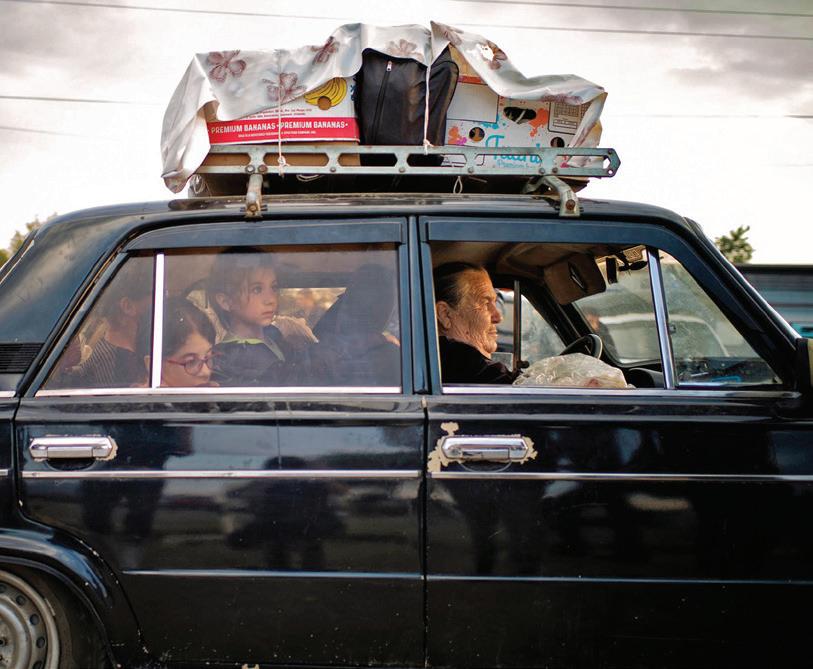

Արցախի կողքին» կարգախօսով
ժողովրդային հաւաք մը տեղի
ունեցաւ Թորոնթոյի Հայ կեդրոնի

շրջափակէն ներս, ուր հարիւրաւոր
թորոնթոհայեր մէկ սիրտ դարձած
համախմբուեցան՝ դատապարտելու
Ազրպէյճանի վերջին ոտնձգութիւնն
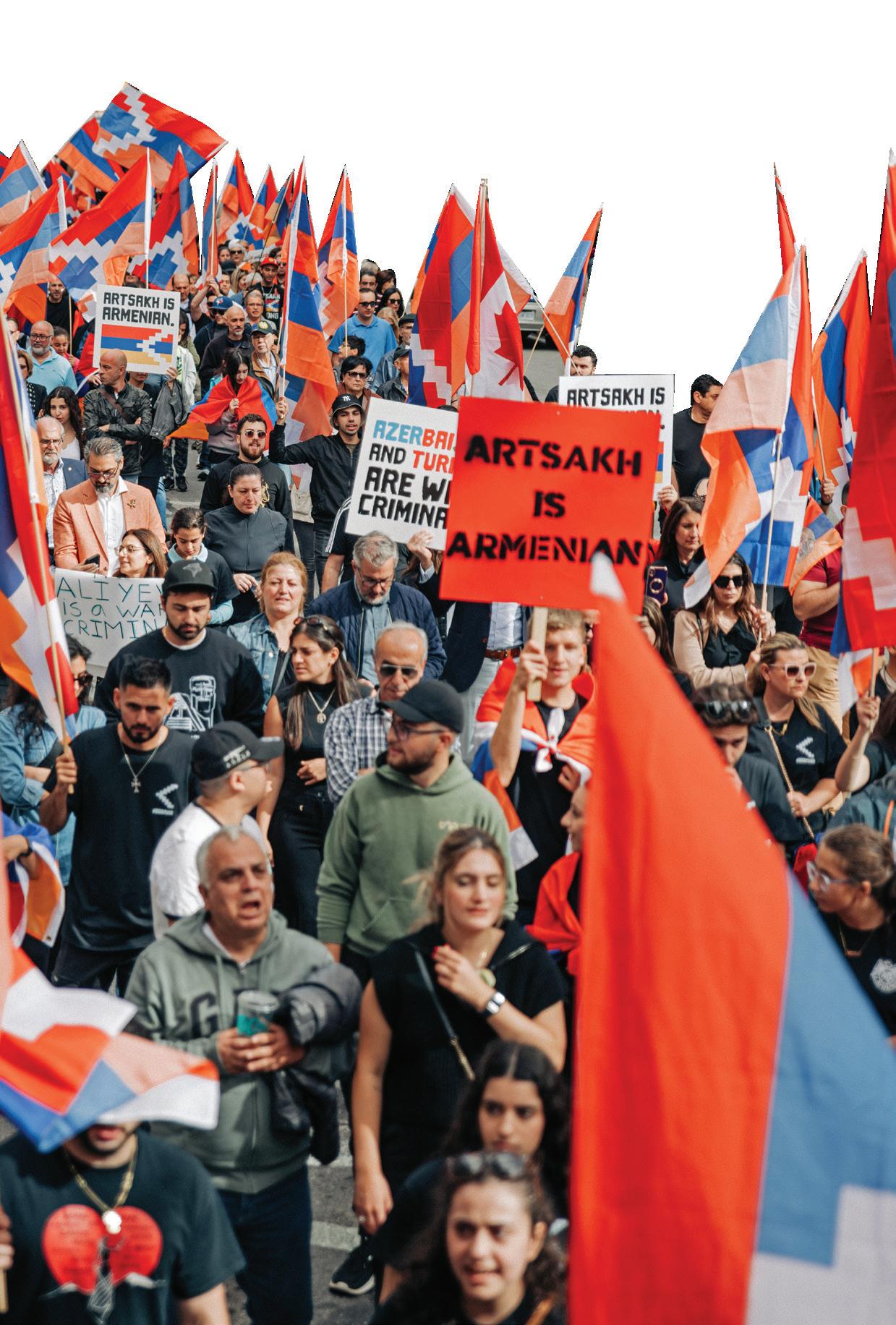
ու սանձարձակ լայնածաւալ
յարձակումները՝ արցախահայութեան
նկատմամբ։
Հայ կեդրոնի վերնայարկին շուրջ
տեղադրուած Արցախի մեծկակ
դրօշակը, սեւազգեստ գայլիկ-
արծուիկներու եւ ԳԵՄ-ականներու
բարձրացուցած դրօշները,
առումով ծանրագոյն իրավիճակի
մը դէմ յանդիման գտնուելու
օրհասականութիւնը կ’արձագանգէր։

Արցախի օրհներգով սկսած
հաւաքը շարունակուեցաւ մէկ
վայրկեան լռութեամբ՝ յարգանքի
տուրք մատուցելու ՝ ի յիշատակ
Արցախի մէջ վերջին օրերուն ինկած
մեր հերոսներուն։
Արտահերթ հաւաքի
պատճառներուն, յառաջիկայ օրերու
ընթացքին արցախահայութեան
եւ ողջ հայութեան սպառնացող
վտանգներուն մասին՝ ամպիոնէն
բարձրաձայնեց եւ օրուան
պատգամը ներկաներուն փոխանցեց
Ռազմիկ Պէպէճեան։ Ընկեր Պէպէճեան իր խօսքը սկսաւ
ժողովրդական ասացուածքով՝
«Ազգերու մեծութիւնը
vol. 18 No 9[194] «ՄԱՍՈՒՆՔ ԱՍՏՈՒԱԾԱՅԻՆ, ՔԵԶՆՈՎ ԵՆՔ ՀԱՒԵՐԺԱՆՈՒՄ» | Հոկտեմբեր 2023 October 416-491-2900 info@torontohye.ca 45 Hallcrown Place Toronto, Ontario M2J 4Y4 © Torontohye Communications Inc. torontohye.ca Թորոնթոհայ ամսագիր թորոնթոհայութեան ձայնը՝ 2005-էն ի վեր Torontohye monthly the voice of Toronto Armenians since 2005 խաչբառ` նուիրուած խիզախ արցախահայութեան → 25 Արցախահացութեան ապագան անորոշ. թորոնթոհայութիւնը կը մնայ Արցախի կողքին Կրթական մշակ՝ Մարգար Շարապխանեանի յիշատակին Համայնք → 6-11 Տիրուկ Մարգարեան
→ 2 19 սեպտեմբերի կէսօրին Ազրպէյճանը լայնածաւալ պատերազմ սկսաւ Արցախի
«հակաահաբեկչական
Կարապետեան
դէմ` զայն անուանելով
Թորոնթոհայութիւնը Արցախի կողքին
«SOS ARTSAKH» եւ «Արցախն ուրանալը դաւաճանութիւն է» գրութիւններով պաստառները, ներկայ եղող թորոնթոհայութեան տխուր հայեցքներն ու թաց աչքերը՝ ներկայ պահին լրջութիւնն ու պատմական
պէտք է տեսնել անոնց պատմութեան օրհասական թուականներուն, քանզի ճգնաժամերը կը գօտեպնդեն ու կը զօրացնեն կամք ու Արցախահայութեան զօրակցութեան
Տեղահանուած արցախահայ ընտանիք
Կոռնիձոր,
Սքաութ Թիւֆենքճեանի)
քայլերթը տեղի ունեցաւ 24 սեպտ. 2023-ին (լուսանկարը՝ Իշխան Ղազարեանի)
մը.
սեպտ. 28, 2023 (լուսանկարը՝
հետեւեալ կէտերը.«Առաջին՝ Պէտք է ամէն գնով զօրակցիլ գաղթական մեր հայրենակիցներուն:
Երկրորդ՝ Մեր ազգային ինքնութիւնը անկարելի է չպահպանել ու կրակը վառ չպահել: Ահա ունինք դպրոց, եկեղեցի եւ ակումբ՝ տէր կանգնինք անոնց: Բացատրենք մեր զաւակներուն, որ դատ ունեցող ժողովուրդի մը զաւակներ ենք եւ մեր նպատակը տկարութիւն չի ճանչնար: Երրորդ՝ Պէտք է միաւորուիլ, որպէսզի միասնաբար գերագոյն դաւաճանը, որ անբարոյական մօր մը նման լքեց իր զաւակը, հեռացնենք: Հիասթափիլ չկայ: Պիտի պայքարինք»: Հայրենասիրութեան կրակով բորբոքած թոոնթոհայութիւնը իր կանչերով դարձեալ նզովեց արիւնարբու թշնամին եւ ազգային երգերու շարանին մասնակից դառնալով՝ միաբերան, ուժգին եւ բարձրաձայն երգեց ցաւի, պայքարի, հայրենասիրութեան եւ սխրագործութեան գաղափարներով հարուստ մեր ազգային երգերը եւ անգամ մը եւս ուխտեց ամէն գնով տէրը կանգնիլ ամբողջական Հայաստանին եւ մեր անգին հայկական հողերուն։
Հաւաքի աւարտին բոլոր
թորոնթոհայերը հրաւիրուեցան
կիրակի օրուան ընթացքին կայանալիք
քայլարշաւին։
Կիրակի, 24 սեպտ. 2023-ին, Թորոնթոյի Տանտասի կեդրոնական
հրապարակէն արցախահայութեան զօրակցութեան քայլերթ մը ծայր առաւ, մասնակցութեամբ հազարաւոր թորոնթոհայերու: Քայլերթի ընթացքին, մասնակիցները բողոքի ցոյցեր
կազմակերպեցին Ամերիկայի Միացեալ
Նահանգներու հիւպատոսարանի դիմաց
եւ Նաթան Ֆիլիփս հրապարակին մէջ: ***
Ստորեւ կը ներկայացնենք Հայ
կեդրոնի ներկայացուցիչ
մէջ: Below are remarks delivered by the president of the Armenian Community Centre at the March for Artsakh, which took place on Sunday, Sept. 24, 2023, in downtown Toronto.
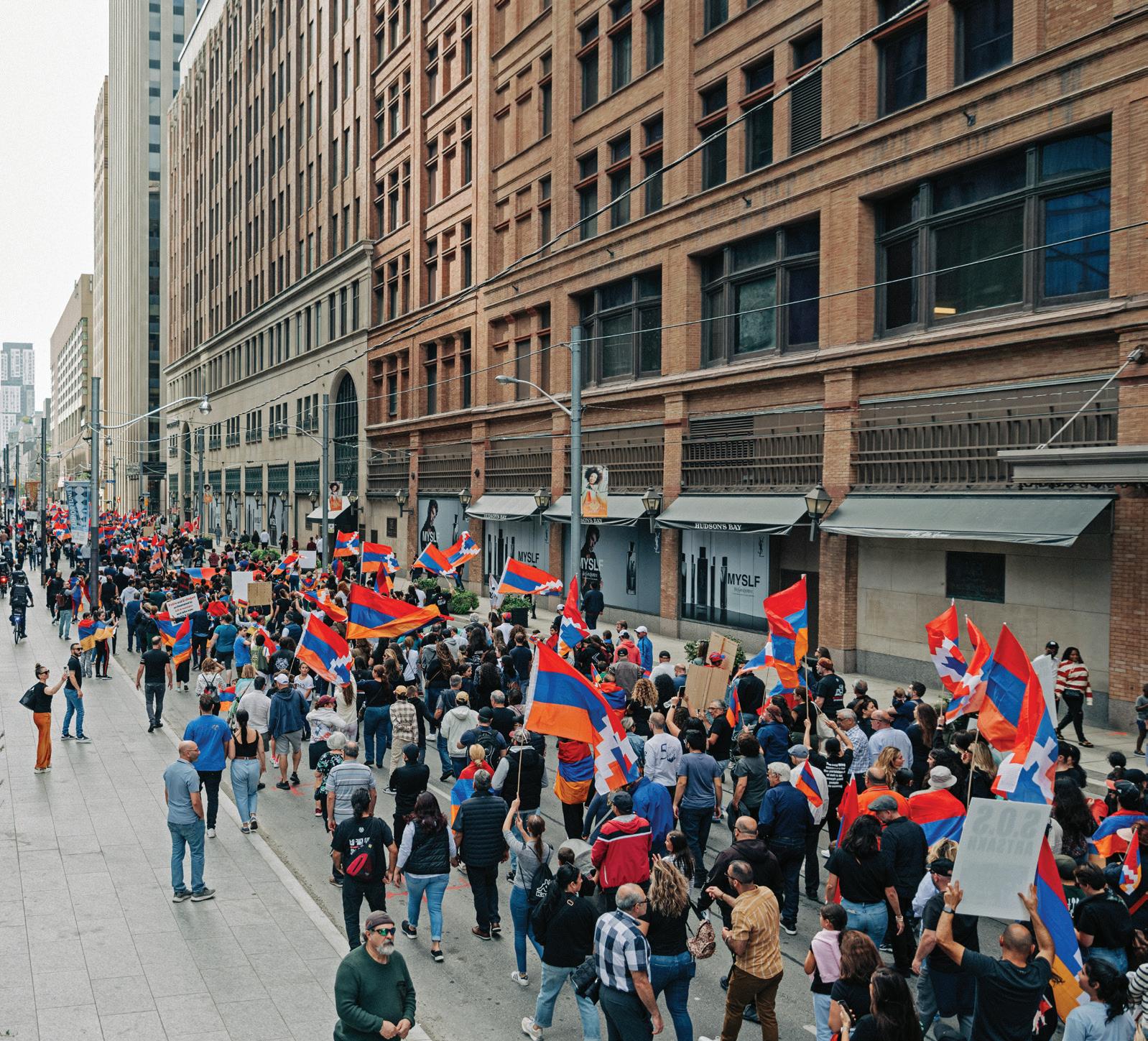
Ladies and Gentlemen, Dear Canadians, welcome to our March for Artsakh as we near its completion at Nathan Phillips Square.
The Armenian people are no strangers
to massacres and genocide from their neighbours. In 1915, under the cover of the First World War, The Ottoman Turkish government sought to eradicate its Armenian minority. One and a half million people were killed while the world largely stood by and watched.
A century later, the genocide continues.
This is not 100 years ago. One does not have to wait weeks to get information from the Caucasus. It’s all there instantly for us to see. We do not have 120,000 civilians to spare. We simply can’t have the West sit on its hands and watch how this genocide unfolds and then wait another century to finally recognize that it happened and once again utter the pointless words “never again.” We need action, and we need it now.
Just two days ago, welcoming Volodymyr Zelenskyy
to our Parliament, Canadian Prime Minister Justin Trudeau said, “Violations to the rules-based international order must be denounced, and aggressors must be held responsible for their actions. That has always been our government’s position. That is why, without exception, we oppose authoritarian states, and we stand by those who defend international law, universal human rights, and the ability of all peoples to decide on their own future.”
It sounds great. However, we haven’t done that in the case of the Armenians. When one ruthless dictator, Vladimir Putin, invaded democratic Ukraine, Canada justifiably jumped to its defense. We
have provided nearly nine billion dollars and growing in military, financial, and humanitarian support to Ukraine, to this democracy fighting an oil-rich, larger, brutal dictatorship that started the hostilities. We have led the world in diplomatic support and taken in over 175,000 Ukrainian refugees.
But we have done nothing for the Armenians. When the oil-rich, deranged tyrant of Azerbaijan, Ilham Aliyev, who inherited power from his father and appointed his wife Vice President, attacked the democratic Republic of Artsakh repeatedly, we did nothing. No speeches, no support, no billions of dollars of aid to the minority, no weapons so that they can defend themselves from this ruthless aggression. Why? Do Armenian lives not matter? Is Azerbaijani oil worth turning a blind eye to mass genocide? Are Armenians not even one percent of the friends to Canada that Ukrainians are that they deserve nothing? So it’s ok to sit idly by and issue the odd government-sponsored tweet showing our “concern for civilians,” which the Azerbaijanis know by now are just toothless statements? No, it’s not ok. The Armenians of Nagorno-Karabakh need to be supported by tangible means.
1 լուսարձակ spotlight
5 համայնք community
14 զրոյց conversation
22 սիւնակ column
Հրատարակիչ Torontohye Communications Inc. info@torontohye.ca
Խմբագիր Ռուբէն Ճանպազեան editor@torontohye.ca
Ձեւաւորող Արա Տէր Յարութիւնեան ara@torontohye.ca
Օգնական խմբագիր
Տիրուկ Մարգարեան Կարապետեան diroug@torontohye.ca
Օգնական խմբագիր
Սալբի Սաղտըճեան salpy@torontohye.ca
Վարչական ներկայացուցիչ
Միսակ Գալւագեան missak@torontohye.ca
Խորհրդատու
Յարութ Մանուկեան harout@torontohye.ca
Ծանուցումներ ads@torontohye.ca
Նախագիծ Proper Company-ի proper.am
Publisher Torontohye Communications Inc. info@torontohye.ca
Editor Rupen Janbazian editor@torontohye.ca
Graphic designer/Layout editor Ara Ter Haroutunian ara@torontohye.ca
Associate editor/Staff writer Diroug Markarian Garabedian diroug@torontohye.ca
Associate editor/Armenia correspondent Salpy Saghdejian salpy@torontohye.ca
Administrator Missak Kawlakian missak@torontohye.ca
Advisor Harout Manougian harout@torontohye.ca
Advertisements ads@torontohye.ca
Branding Proper Company proper.am
→ 24
So far, we have proven that as long as it does not serve its interests, the international community will remain indifferent in the face of even the most gross violations of international law. But there are things we can do.
ԼՈՒՍԱՐՁԱԿ 3 Vol. 18, No. 9 [194] ◆ October 2023
SPOTLIGHT
Արցախի անկախ Հայաստան գոյութիւն պիտի չունենայ։ Պատգամի աւարտին, ան խօսքը թորոնթոհայութեան ուղղելով՝
կարեւորեց
Վահան Աճէմեանի (անգլերէն) խօսքէն հատուածներ. խօսքը արտասանուեցաւ Նաթան Ֆիլիփս
***
հրապարակին
(լուսանկարը՝ Իշխան Ղազարեանի)
Համազգային զօրաշարժ՝ ի խնդիր արցախահայութեան.
խմբագրական
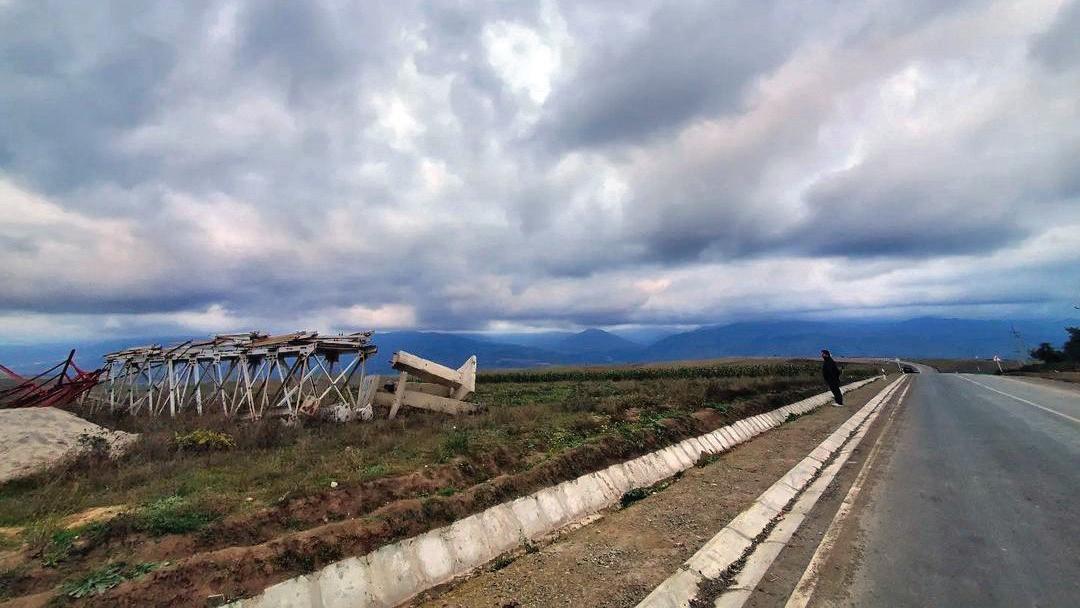
Ցեղասպանութիւն, էթնիկ զտում, հայրենազրկում, բռնի տեղահանութիւն․․․

եզրոյթներ, որոնք անզօր են բնորոշելու Արցախի մէջ ստեղծուած եղերական
վիճակը։
Թշնամին իր ամբողջ վայրագութեամբ, դաժանութեամբ գործեց եւ բռնի
տիրացաւ Արցախին. իսկ տասնեակ տարիներ հայրենի հողը պաշտպանելու
համար արիւն թափած արցախահայութիւնը այսօր կը բռնէ գաղթի ճամբան:
Տեղի կ’ունենայ զանգուածային տեղահանութիւն․ ան չ’ուզեր թշնամիին լուծին
տակ ապրիլ, կը գերադասէ բաժնուիլ իր հայրենի բնօրրանէն, կառուցած
տունէն, տեղէն, իր սրբազան երկրի համար արիւն թափած հերոսներու
գերեզմաններէն, սրբավայրերէն, քան ենթարկուիլ էթնիկ զտումներու։
Արցախէն Հայաստան 1 հոկտեմբերի երեկոյեան ժամը 8-ի դրութեամբ տեղահանուած է 100 514 անձ: Միջազգային դատապարտող կոչերը, Ազրպէյճանին ինը ամիս տեւած շրջափակման վերջ տալու պարտաւորեցնող բանաձեւերը, հայ ժողովուրդի զօրակցական հաւաքները չկասեցուցին Ազրպէյճանի ցեղասպան քաղաքականութիւնը։ Ականատես ենք հազարաւոր տարիներ հայկականութեամբ ապրած, թշնամիներու դէմ քաջաբար կռիւ մղած եւ անկախութեան համար պայքարած հայրենիքի մէկ մասնիկին կորուստին։ Ասիկա ի՞նչ է, եթէ ոչ՝ ցեղասպանութիւն։ Քսանմէկերորդ դարուն ի լուռ աշխարհի Հայկական ցեղասպանութեան մը եւս կը գործադրէ թշնամին։ Ազրպէյճանը ամբողջ երեսուն տարի պատրաստուեցաւ տիրանալու Արցախին, ան գործեց բոլոր ճակատներով: Հայաստանի իշխանութիւնը իր վարած ապազգային քաղաքականութեամբ դիւրացուց թշնամիին գործը․ սխալ դիւանագիտութեամբ ամբողջութեամբ տապալեց բանակցային գործընթացը, դուռ բացաւ պատերազմի եւ Արցախի Հանրապետութիւնը ճանչցաւ որպէս Ազրպէյճանի մաս։ Վերջին պատերազմին նոյնիսկ օգնութեան չհասաւ:
Պատմութեան ընթացքին մեզի պատուհասած արհաւիրքներէն դասեր չքաղեցինք, մեր սխալներ չուղղեցինք եւ յոյսը դրինք օտարի «փրկութեան» վրայ։ Երեսունամեայ չքնաղ Արցախի Հանրապետութիւնը այնքան չսիրեցինք, չփայփայեցինք, որ զայն դարձնէինք անառիկ ամրոց թշնամիներուն դէմ։ Այսօրուան հրամայականը համազգային զօրաշարժն է․ մեր ամբողջ ներուժը ի սպաս դնենք, գործենք որպէս մէկ ընտանիք, նեցուկ կանգնինք մեր տառապեալ քոյրերուն եւ եղբայրներուն, օգնութեան ձեռք երկարենք տեղահանուած մեր հայրենակիցներուն, անոնց ապահովենք կացարանով, ուտելիքով եւ առաջին անհրաժեշտութեան պարագաներով, աշխատանքով։ Միայն այդ կերպով կրնանք մեղմել անոնց ցաւը եւ անհուն կորուստներուն
4 ԺԸ տարի թիւ 9 [194] ◆ Հոկտեմբեր 2023
ԼՈՒՍԱՐՁԱԿ SPOTLIGHT
վիշտը եւ յոյս տալ անոնց նոր կեանքի։ ֍ «Թորոնթոհայ» Կոռնիձոր, 30 սեպտ. 2023 (լուսանկարը՝ Ռուբէն Ճանպազեանի)
ՀՕՄ-ի ԱՄԷՆՕՐԵԱՅ ՎԱՐԺԱՐԱՆԻ
45-ՐԴ ՎԵՐԱՄՈՒՏ ԱՌԱՋԻՆ ԶԱՆԳԸ ԴԱՐՁԵԱԼ ՀՆՉԵՑ
Թորոնթոյի ՀՕՄ-ի Ռուբինա մանկամսուրի, Պապայեան մանկապարտէզի, Գոլոլեան
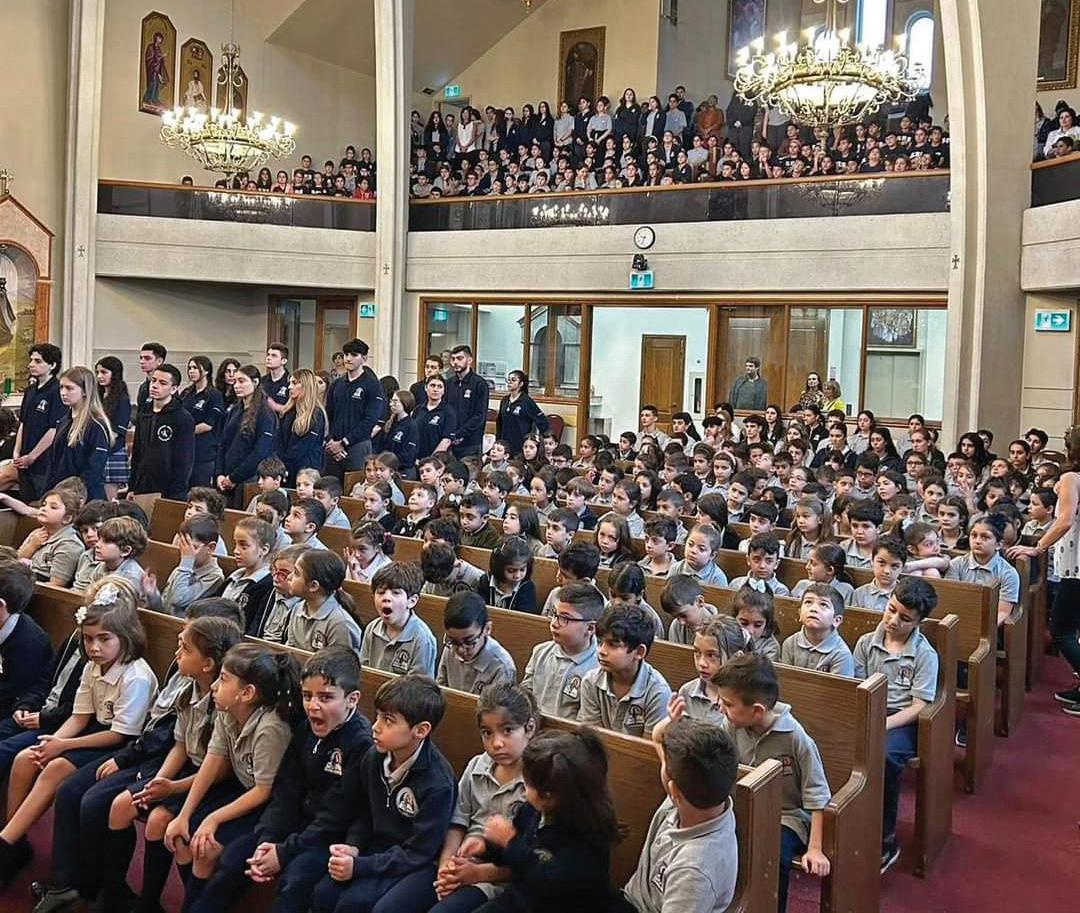
նախակրթարանի եւ Լափոյեան երկրորդական վարժարանի 45-րդ վերամուտի զանգը հնչեց երեքշաբթի, 5 սեպտեմբեր 2023ին, առաւօտեան ժամը 9-ին: Տնօրէնութիւն, ուսուցչակազմ, աշակերտութիւն եւ ծնողք վերադարձան նպատակաուղղուած աշխատանքի: ՀՕՄ-ի ամէնօրեայ վարժարանը, իր 660 աշակերտներով եւ 75 անձնակազմով ու պաշտօնեաներով, թորոնթոհայ միակ ամէնօրեայ կրթական հաստատութիւնն է, որ
ներկայացուցիչները:
Ս. Աստուածածին Հայաստանեայց Առաքելական եկեղեցւոյ հոգեւոր հովիւ հայր Վարդան ծվ. Թաշճեանի բարի գալուստի խօսքով եւ աղօթքով սկսաւ բացման արարողութիւնը: Վարժարանի Կրթական մարմինի ատենապետ Վազրիկ Շարապխանեան ողջունեց աշակերտներու, ուսուցիչներու եւ ծնողներու գալուստը եւ 2023-2024 ուսումնական 45-րդ տարեշրջանը պաշտօնապէս
բացուած յայտարարեց: Ան յայտնեց, որ վարժարանը տարուէ տարի վերելքի մէջ է, բան մը՝ որ կը պարտի անցեալի եւ ներկայ
լուսանկարները տրամադրած է ՀՕՄ-ի ամէնօրեայ վարժարանը
ապագայի մարտահրաւէրները դիմագրաւելու պատրաստել:
Սարգիսեան աւելցուց, որ վարժարանի տնօրէնութիւնն ու ուսուցչակազմը պատրաստ են ծառայելու աշակերտութեան: Աւարտին, ուժ եւ կորով մաղթեց ուսուցիչներուն
Հայր Վարդան ծվ. Թաշճեան
առաւելագոյն ճիգերով կը շարունակէ իրագործել հայապահպանման իր վեհ առաքելութիւնը։
Վարժարանի Ծիլ դասարանէն մինչեւ ԺԲ. կարգի աշակերտները, իրենց ուսուցիչներուն ընկերակցութեամբ, ուղղուեցան Ս. Աստուածածին Հայաստանեայց Առաքելական եկեղեցի, ուր դիմաւորուեցան թորոնթոհայ եկեղեցիներու հոգեւոր հովիւներու եւ ներկայացուցիչներու, վարժարանի տնօրէնութեան, Կրթական մարմինին եւ ծնողներուն կողմէ: Վերամուտի պաշտօնական արարողութեան ներկայ գտնուեցան
ՀՅԴ Գանատայի կեդրոնական
կոմիտէի, ՀՅԴ «Սողոմոն Թէհլիրեան» կոմիտէի,
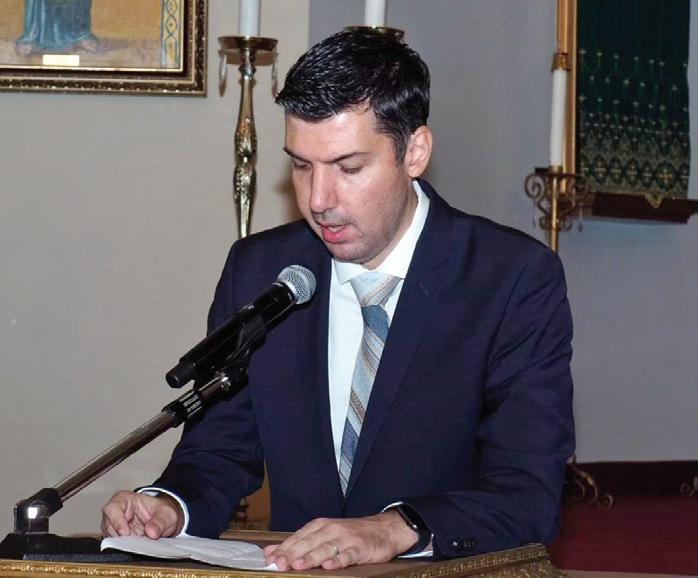

Վարժարանի տնօրէն Րաֆֆի Սարգիսեան
տնօրէններուն, ուսուցիչներուն, քարտուղարական կազմերուն եւ կրթական մարմիններուն, որոնք ճիգ չխնայեցին ու չեն խնայեր, որ վարժարանը յաջողի ջամբել գերազանց ուսում, տիպար նկարագիր եւ ազգային ու հայկական գիտակցութիւն, դպրոցական ապահով միջավայրի մը մէջ: Ան շնորհակալութիւն յայտնեց վարժարանի բոլոր բարերարներուն եւ «Սողոմոն Թէհլիրեան» կոմիտէութեան, Ս. Աստուածածին եկեղեցւոյ եւ ուղեկից միութիւններուն

իրենց շարունակական անվերապահ աջակցութեան ու հոգատարութեան՝
կրթական այս օճախին վերելքին
Կրթական մարմինի ատենապետ Վազրիկ Շարապխանեան
Ան շնորհակալութիւն յայտնեց ծնողներուն, որոնք վարժարանին կը պարգեւեն այդ հոգեպարար առիթը: Վարժարանի 45-ամեակի սեմին, պարոն Սարգիսեան իր խօսքին մէջ յիշեց նաեւ մեր վարժարանի վերելքին սատարող անձնակազմի նուիրեալ անդամները, որոնք ոչ եւս են, ինչպէս՝ մեր հիմնադիր տնօրէն պարոն Մարգար Շարապխանեանը, փոխտնօրէններ՝ պարոն Վարուժան Նիգոլեանը եւ պարոն Ռաճըր Վէյլը: Ան, մէջբերելով պարոն Մարգարին խօսքերը, արտասանեց՝
յաջողութիւն՝ աշակերտներուն: Հայր Վարդան ծվ. Թաշճեանի սրտի խօսքերով, տէրունական աղօթքով ու պահպանիչով փակուեցաւ ՀՕՄ-ի ամէնօրեայ վարժարանի 45-րդ վերամուտի արարողութիւնը, որմէ ետք աշակերտները ուսուցիչներուն առաջնորդութեամբ ուղղուեցան իրենց դասարանները՝ յաջողութիւններով լեցուն ուսումնական նոր տարեշրջան մը սկսելու համար: ֍
«Աստուած կ’օրհնէ, շէն կը պահէ օճախդ, Եթէ անձէդ բաժին հանես ուրիշին. Ունեցածիդ ամուր
5 ՀԱՄԱՅՆՔ COMMUNITY Vol. 18, No. 9 [194] ◆ October 2023
ՀՕՄ-ի «Ռուբինա» մասնաճիւղի, Հայ կեդրոնի յարկին տակ գործող քոյր միութիւններու եւ Ս. Աստուածածին եկեղեցւոյ հոգաբարձութեան
համար: Ապա խօսք առաւ տնօրէն Րաֆֆի Սարգիսեան, որ յայտնեց, թէ մեծ պատիւ է 18-ամսեայ հայ մանուկէն մինչեւ 18 տարեկան հայ երիտասարդին գուրգուրալ, դաստիարակել,
շունչով սնուցանել եւ զայն
հոգին ազնուացնել, հայկական
եւ յարատեւ
կերպով մի փարիր, Զի ան, վստահ, մահէդ անդին չես տանիր»: «Մեր հայ լեզուն երբե՛ք չենք մոռնար, Անոր յաւիտեան պահակներ կ’ուզենք դառնալ, Բոլոր հայերն աշխարհի թող իմանան, Որ հայ լեզուն երբ կայ, Հայաստանն ալ կը մնայ»:
In the tapestry of life, there are those rare individuals who stand as beacons, illuminating the path for others through their unwavering dedication to the community. Markar Sharabkhanian was one such extraordinary soul, a luminary whose brilliance shone brightly in every facet of his life. He was a dedicated principal, a community leader, a devoted husband, father, and grandfather, and a long-time friend and contributor to our publication.
Born into the loving embrace of Onnik and Shake Sharabkhanian, Markar's story began in the town of Kalamata, Greece. He was the second of three children in the Sharabkhanian family. Markar's insatiable thirst for knowledge was evident from a young age, and his pursuit of education took him to the enchanting city of Venice.
Upon completing his studies at the esteemed Moorat-Raphael College, Markar returned to Athens, where he assumed a role as a teacher of Armenian studies. However, fate had a different plan, leading him to Toronto in 1968, where he accepted a librarian position at the University of Toronto. It was in this young and burgeoning Armenian community that Markar's dedication to the Armenian culture would truly flourish.
Markar was a driving force in the Armenian community of Toronto, and his commitment to the Armenian people was unwavering. He was a talented writer and speaker, advocating tirelessly for the well-being, justice, and service of Armenians worldwide. In the early days of the Armenian Community Centre, he played an instrumental role in founding and editing Artsakank—the first Armenian journal-magazine of its kind in Toronto.
In 1975, Markar embarked on another significant chapter in his life when he married his beloved Elise Hasserjian, and together, they were blessed with two children, Hovig and Vazrig. Four years later, in 1979, he played a pivotal role in establishing the ARS Armenian Private School of Toronto, where he served as the institution’s founding principal. His

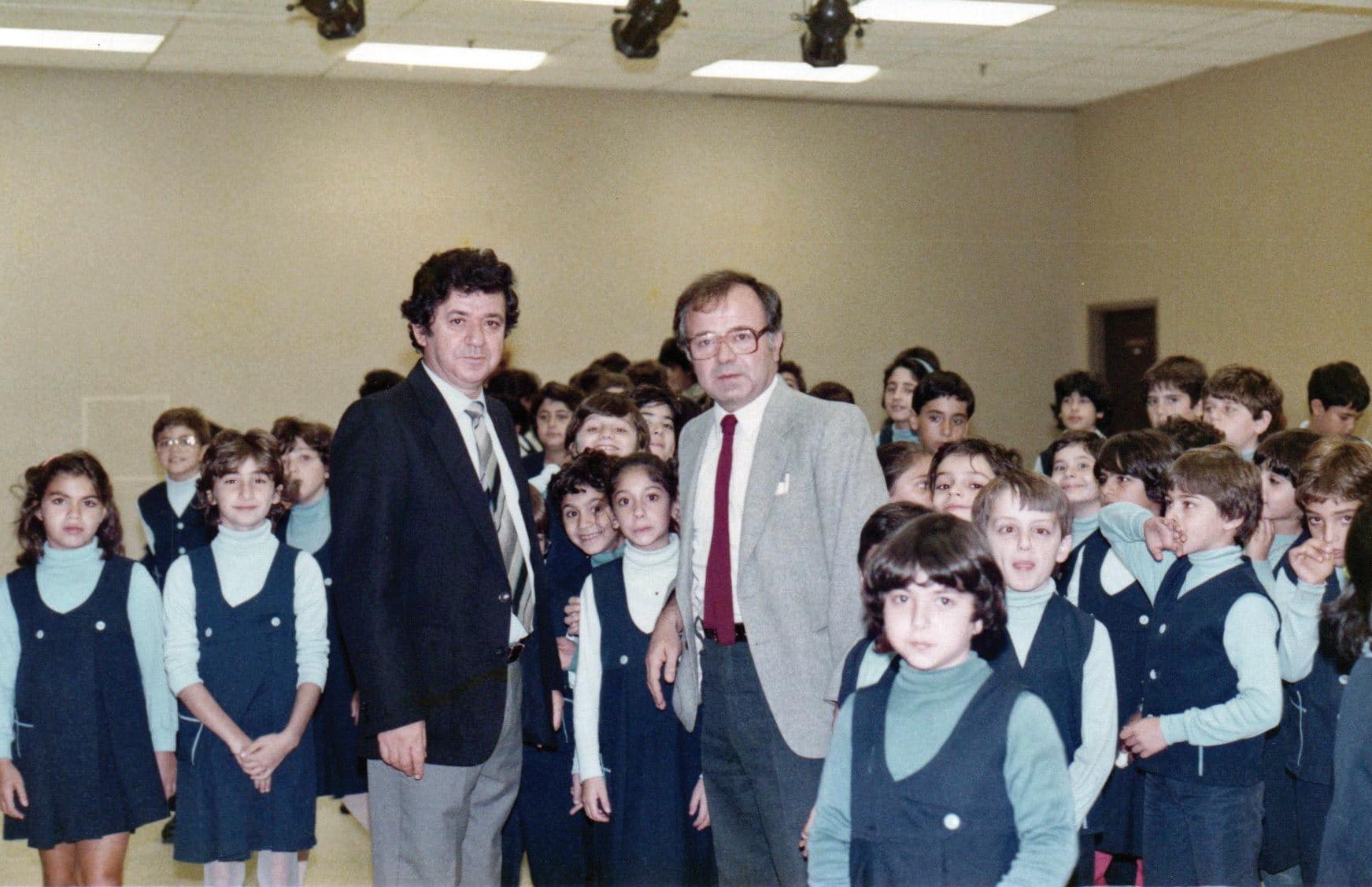
vision laid the foundation for the remarkable educational institutions that stand today, including Roubina Nursery, Babayan Kindergarten, Kololian Elementary, and Lapoyan Secondary schools.

What makes Markar Sharabkhanian's story even more compelling is the backdrop against which his life unfolded. He was born into one of the most tumultuous periods in Armenian history, the first generation of an exiled people. The weight of exile and the loss of his homeland and roots were etched
If every village in Armenia could have been blessed with someone like Baron Markar, there is no doubt that the nation would flourish even more
mark on national, educational, cultural, and political affairs wherever he was. As we reflect on his life's work, we are inspired by his ability to instill pride in Armenian identity, a love for language and literature, and the belief that future generations would carry forward the legacy of Armenia with honour.
To his beloved wife and our dear friend Elise, his cherished sons Hovig and Vazrig and their spouses, and his adored grandchildren Nayira, Tvin, Tatev, Ary, and Sevan, we extend our deepest condolences and gratitude for sharing Markar with the world. The void left by his departure will be felt deeply, but his legacy lives on in the hearts of all those he touched.
onto his soul, making him intimately familiar with the profound suffering and anguish of his people.
Throughout his life, the Armenian language remained his constant companion. He nurtured young minds with a fatherly warmth, instilling in them a deep love for the Armenian language, history, culture, and literature.
In his twilight years, Markar found solace and connection in the village of Ushi, Armenia, and to the surprise of many, these years were marked by a vitality and activity just as great as his years as principal. In Ushi, he not only injected new life into the village but also found new life within its welcoming embrace. The village adored him, and to the children, he was "Baron Markar," as if he had been their own school principal. The entire village treated him with deep respect and admiration.
brightly.
Markar Sharabkhanian's legacy is one of integrity and foresight. He turned his beliefs into actions, leaving an indelible
Though Baron Markar may have left this world, his spirit endures as a guiding light. May his memory be a blessing and an enduring source of inspiration for generations to come.
9 ՀԱՄԱՅՆՔ COMMUNITY Vol. 18, No. 9 [194] ◆ October 2023
֍ Torontohye
A tribute to Baron Markar: an enduring source of inspiration for generations to come
միութեան «Գլաձոր» մասնաճիւղը իր խորին ցաւակցութիւնները կը յայտնէ իր անդամներէն՝ ընկերուհի Պերճուհի Ահարոնեանի հարազատներուն, անոր մահուան տխուր առթիւ, որ պատահեցաւ յուլիս ամսուան վերջը։ Պերճուհի Մանուշակեան Ահարոնեանը երրորդ զաւակն է վերապրողներու, Խարբերդի Ալպիսթան շրջանէն։ Ծնած է Հալէպ, կանուխէն հայրը կորսնցուցած է։ Յաճախած է Քարէն Եփփէ ճեմարանը, ապա, յիսունական թուականներու սկիզբը, փոխադրուած են Լիբանան։ 1957-ին կ՚ամուսնանայ Գառնիկ Ահարոնեանի հետ եւ կը փոխադրուի Թրիփոլի։ Մեծ կ’ըլլայ ուրախութիւնը ծնողներուն, երբ Գառնիկին ծնողքն ալ Խարբերդի նոյն շրջանէն են։ Կը
բախտաւորուին երկու զաւակներով՝
Վիգէնով եւ Քարէնով։ 1976-ին կը
փոխադրուին Գանատա։ ՀՕՄ-ի
ամէնօրեայ վարժարանի թիկունք
եղած են առաջին օրէն իսկ։ Այդ իսկ
պատճառով զաւակները յարմար
տեսած են՝ փոխան ծաղկապսակի


բոլոր նուիրատութիւնները ըլլան
վարժարանին։
Յետագային, Ահարոնեանները
բախտաւորուած են հինգ
թոռնիկներով՝ Արամ, Սիմոն, Ատրիանա, Թրոյ, Պիանքա։

Իւրաքանչիւրին կեանքին մէջ իրենց
մեծ մայրը կարեւոր դեր ունեցած
է՝ իր հոգատարութեամբ, սիրով եւ
գուրգուրանքով։

Աշխատած է դրամատան ու Gap
ընկերութեան մէջ, ուր ընտրուած է
որպէս լաւագոյն պաշտօնեայ։ Մինչեւ 88 տարեկան Gap ընկերութեան

պատասխանատուները կ՚ուզէին, որ շարունակէ իր աշխատանքը, նոյնիսկ մասնաժամ, որովհետեւ գիտէր յաճախորդներուն հետ ինչպէս վարուիլ, ապրանքներու որակը եւ տեսակները լաւ կը ճանչնար։ Որպէս Համազգայնական եղած է օրինակելի։ Ստանձնած է վարչական եւ յանձնախումբային
պատասխանատուութիւններ։
Վերջին 20 տարիներուն ան Միսիսոկա կը բնակէր ու չէր կրնար իր փափաքածին չափ յաճախ ներկայ ըլլալ Համազգայինի ձեռնարկներուն։ Առանց յիշեցնելու կ՚ուղարկէր իր անդամավճարը
եւ իր լուման կու տար դպրոցի տարեկան դրամահաւաքին։ Կը գնահատէր տարուած աշխատանքը։ Կը հիանար ատենապետներու եւ զանազան ձեռնարկներու օրուան
հանդիսավարներու մաքուր հայերէնով։ Այլ խօսքով կը սիրէր մեր չքնաղ լեզուն, մեր իւրայատուկ մշակոյթը եւ մեր թանկագին դպրոցը։ Իր անձնական կեանքին մէջ եղած է աշխոյժ, ինքնավար, անվախ, ընկերային եւ ջերմ։ Իր հարազատները, հայրենակիցները, ընկերները, գործակիցները
եւ դրացիները գովեստով
կ՚արտայայտուին իր մասին, իսկ Համազգայինի ընտանիքը կորսնցուց հաւատաւոր անդամ մը։ Լոյսերու մէջ հանգչի իր հոգին՝ իր սիրելի Գառնիկին հետ։
12 ՀԱՄԱՅՆՔ COMMUNITY ԺԸ տարի թիւ 9 [194] ◆ Հոկտեմբեր 2023 «Թորոնթոհայ»-ը Գանատայի միակ հայկական ամսագիրն է. ծանուցումներու համար գրեցէ՛ք՝ ads@torontohye.ca ե-հասցէին:
եւ
To advertise in Canada’s only Armenian monthly newspaper, email ads@torontohye.ca! Համազգային հայ կրթական
մշակութային
֍ Արշօ
SHIPPING & FORWARDING INC. METRAS Tel.: 416-497-0377 Fax: 416-497-0783 info@metrasshipping.com www.metrasshipping.com 2175 Sheppard Ave. E. Suite 215 Toronto ON • Ocean, Air & Land International Transportation • Door to Door Services Available • 20', 40', LCL and Break-Bulk • Insurance Coverage • Export Documentation, Letters of Credit Handling and Banking Negotiations • Dedicated Agency Network Worldwide Your Most Reliable Transportation Partner To/From Armenia & Worldwide
Զաքարեան Պերճուհի Ահարոնեան (1934-2023)
of genocide
In a thought-provoking event held on Saturday, Sept. 16, 2023, the Zoryan Institute played host to a book talk featuring Dr. Elyse Semerdjian, titled "Sifting through Remnants: Locating the Voices of Women Survivors." This insightful gathering took place at the Hamazkayin H. Manougian Library of Toronto, offering attendees a unique perspective on the experiences of tattooed women survivors of genocide.
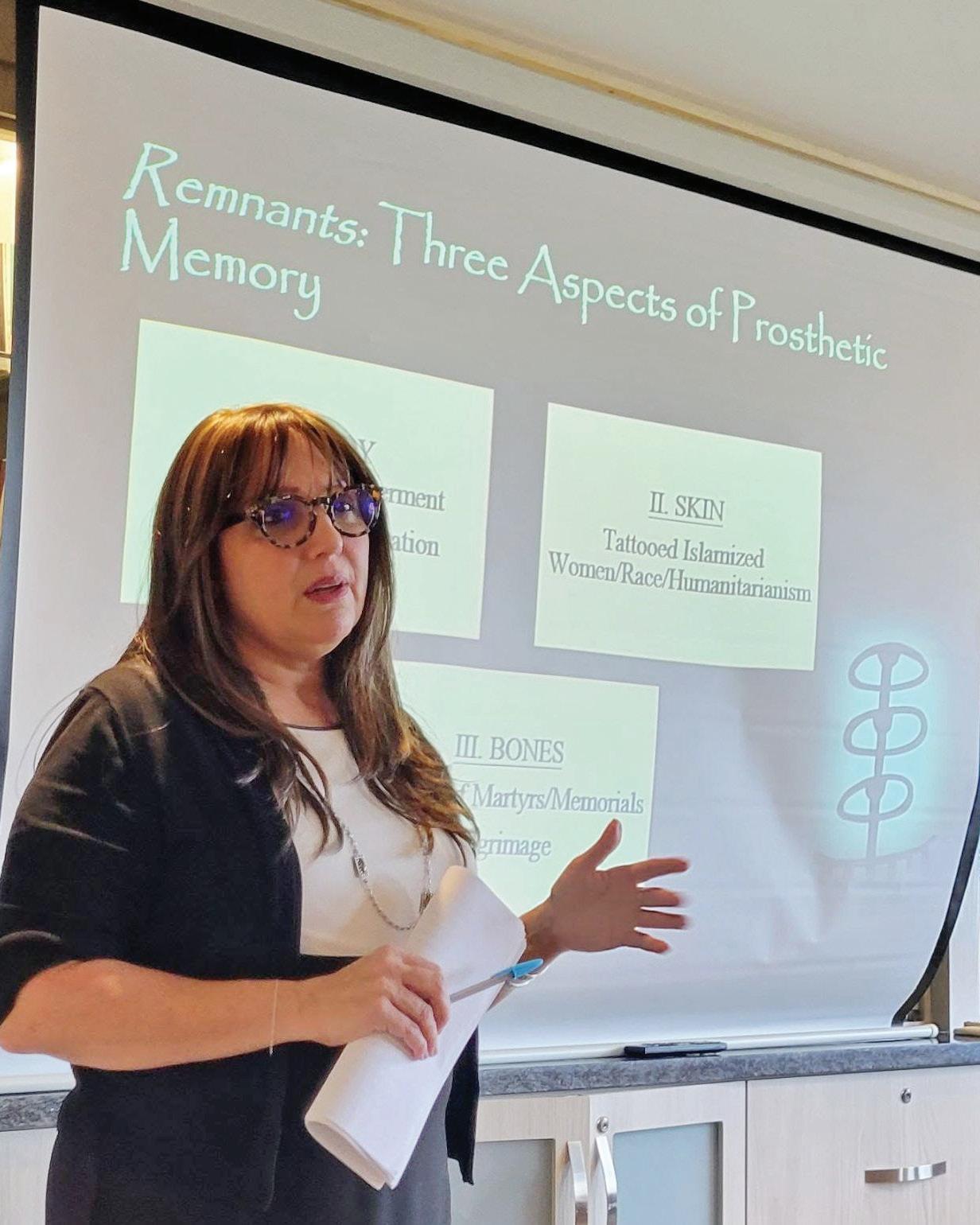
Dr. Semerdjian, who currently holds the Robert Aram and Marianne Kaloosdian and Stephen and Marian Mugar Chair of Armenian Genocide Studies at the Strassler Center for Holocaust and Genocide Studies at Clark University, introduced her latest publication, Remnants: Embodied Archives of the Armenian Genocide. Her book delves into the memories and physical marks carried by tattooed and scar-bearing women who survived the Armenian Genocide. Dr. Semerdjian employs a feminist lens to shed light on how the communal body of the Ottoman Armenian community underwent dismemberment, disfigurement, and eventual reassembly within the survivor community.
Drawing from powerful imagery of tattooed survivors and referencing the audio-visual testimony of Armenian Genocide survivor Aghavni Kabakian from the Zoryan Institute's Armenian Genocide Oral History Archive, Dr. Semerdjian wove engaging narratives about the experiences of survivors. She explored the symbolism behind the tattoos, delved into the profound significance these markings held, and discussed the mental and physical scars left in their wake.
Following the presentation, the audience, which included community members, graduate students, Genocide and Human Rights University Program (GHRUP) alumni, and human rights activists, actively participated in a dynamic question and answer session, demonstrating their keen interest and engagement with the subject matter.
Remnants: Embodied Archives of the Armenian Genocide, published this year, is available directly from the publisher, Stanford University Press, at a price of $30 (USD). Interested readers can use the code SEMERDJIAN20 at checkout to receive a 20 percent discount.
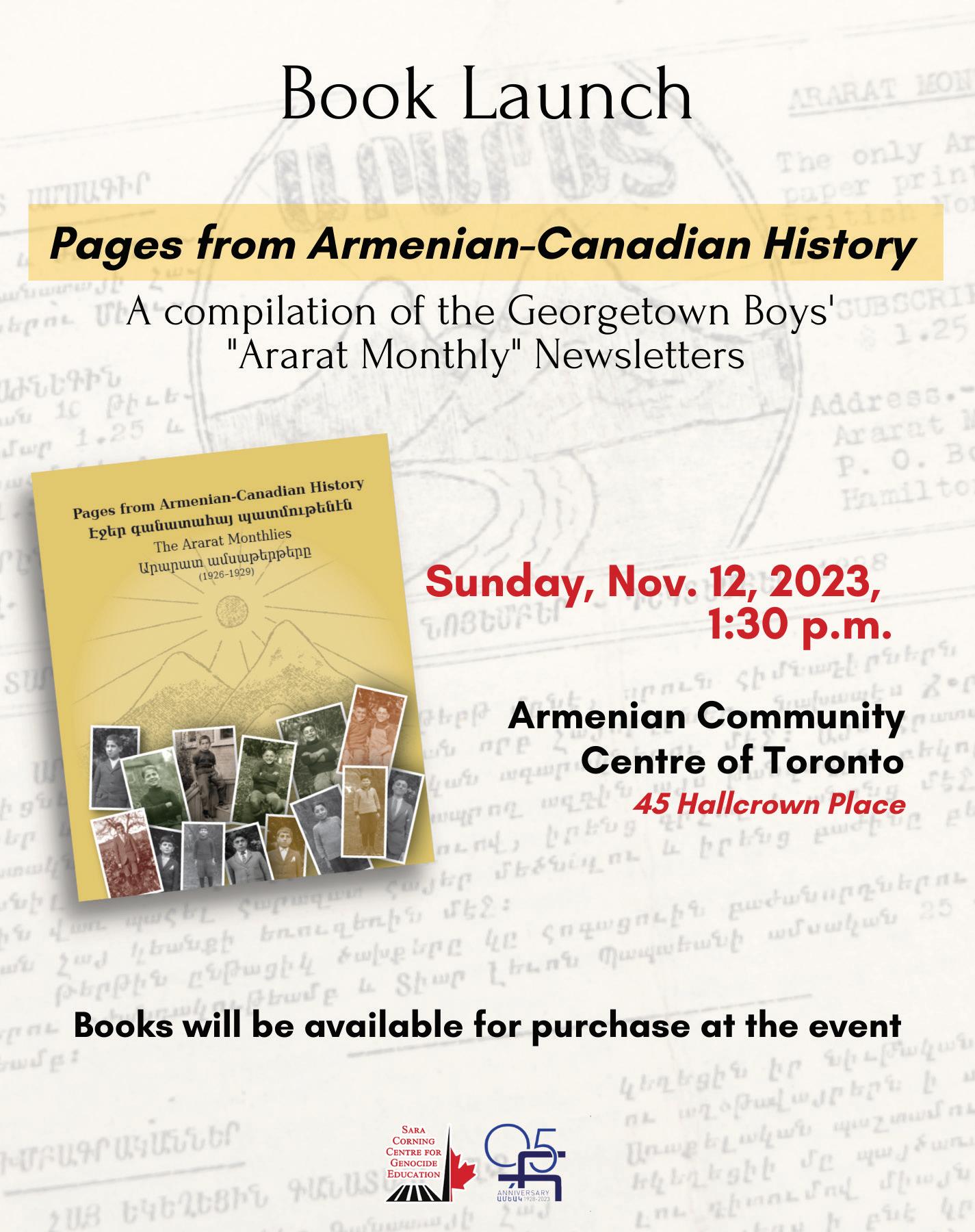

Dr. Elyse Semerdjian's work centers on the history of the Ottoman Empire and the Armenian Genocide, with a particular focus on the history of Aleppo and the Ottoman Armenian community. Her research and teaching emphasize gender, sexuality, Muslim and non-Muslim relations, and the impact of modern warfare, sectarianism, and genocide on society, especially women and minorities. She aims to write a history that highlights the experiences of Armenians, women, and social classes often marginalized in historical narratives.
Dr. Semerdjian, also the author of Off the Straight Path: Illicit Sex, Law, and Community in Ottoman Aleppo (2008), brings a profound perspective to the understanding of the Armenian Genocide, emphasizing the importance of acknowledging the lived trauma through the stories etched on the bodies of survivors.
Remnants: Embodied Archives of the Armenian Genocide offers a feminist reading of the Armenian Genocide, focusing on the tattooed and scar-bearing bodies as living testaments to the historical trauma. It calls for a deeper exploration of affect and memory, aiming to recognize and honor the voices that have long been silenced within the historical record. This event served as a platform for dialogue and reflection, shedding light on a chapter of history that continues to resonate with contemporary discussions of memory, identity, and resilience. For those seeking a more profound understanding of this compelling narrative, Dr. Elyse Semerdjian's book offers an invaluable resource, inviting readers to explore the enduring echoes of the past in the lives of survivors. ֍
13 ՀԱՄԱՅՆՔ COMMUNITY Vol. 18, No. 9 [194] ◆ October 2023
Dr. Elyse Semerdjian (Photo courtesy of the Zoryan Institute)
Dr. Elyse Semerdjian highlights the experiences of tattooed women survivors
Musical minds: A conversation with musicologist Dr. Gascia Ouzounian
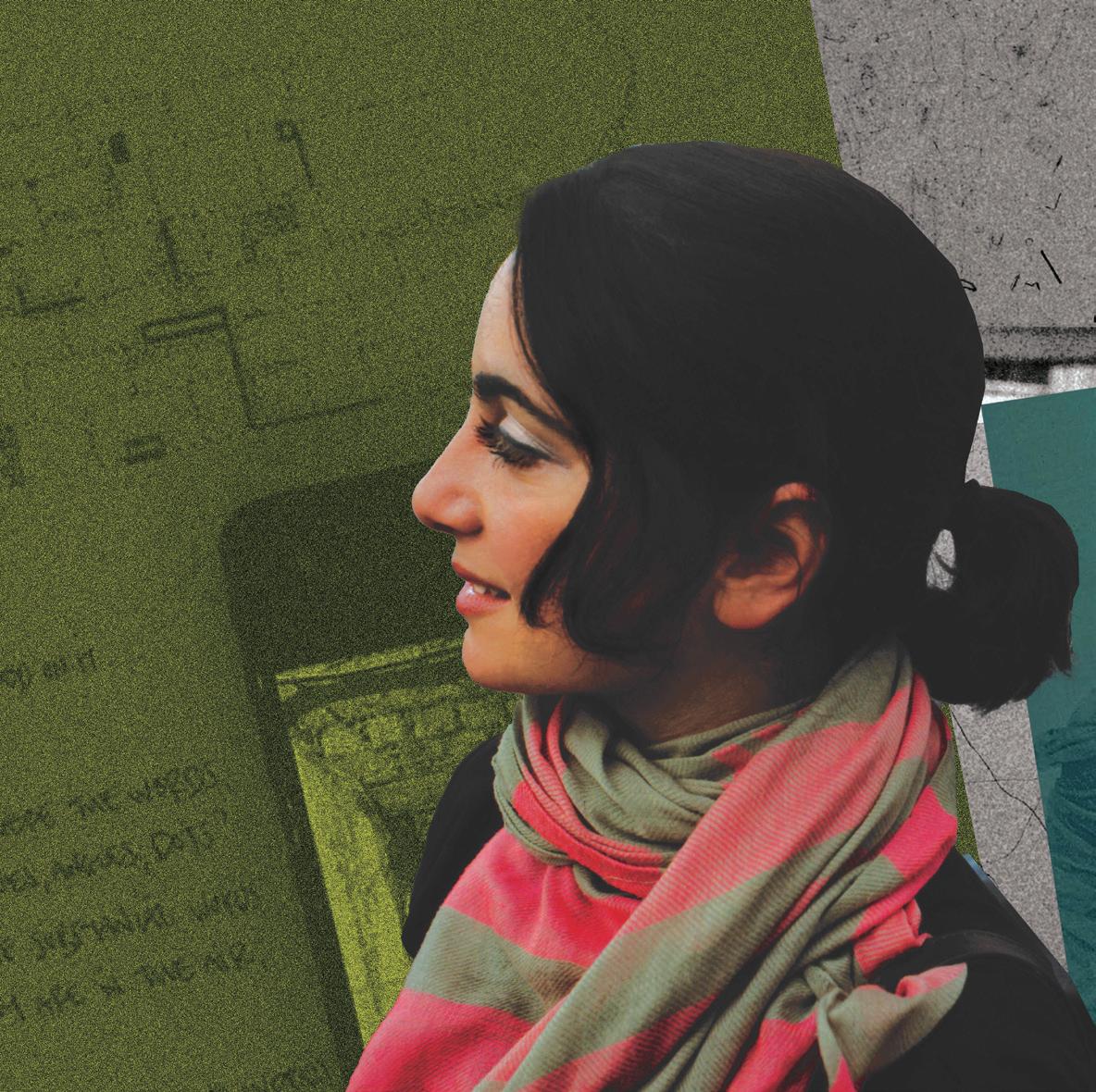 By Dr. Araxie Altounian
By Dr. Araxie Altounian
Musical minds is a conversation series with established, talented Armenian musicians with a Canadian connection who contribute to Armenian musical culture in innovative ways and build bridges between the Armenian diasporic community and its host societies. AGBU Toronto has graciously provided its Zoom platform for live broadcast on Facebook, and its recording on Facebook and Instagram, while Torontohye has been kind enough to publish them.
The following is based on my conversation with my third guest, Musicologist/Sonic Theorist Dr. Gascia Ouzounian.
Dr. Ouzounian is an Associate Professor of Music at the University of Oxford and a Fellow and Tutor in Music at Lady Margaret Hall. She studies sound in relation to space, urbanism, and violence. She is the author of Stereophonica: Sound and Space in Science, Technology, and the Arts (MIT Press 2021) and has contributed articles to leading journals of music, visual art, and architecture. In 2013 Ouzounian co-founded the research group Recomposing the City, which brings together sound artists, architects, and urban planners in developing interdisciplinary approaches to urban sound studies and urban sonic practices. Recent projects include Scoring the City (2020-ongoing), which explores experimental notations for urban design, and Acoustic Cities: London and Beirut (2019), for which ten artists created works that responded to the sonic, social, and spatial conditions of London and Beirut. At Oxford, she currently directs a 5-year project funded by the European Research Council on sonic urbanism, Sonorous Cities (2020-2025). ***
Araxie Altounian: Gascia, you come from a family of three very talented and polished musicians. Your older sister, Maral, is a fine pianist who eventually chose a medical career, you are a violinist turned sonic theorist, and your younger sister, Karen, is leading a successful career as a cellist. Could you tell us what it was like growing up in the Ouzounian family as a budding musician?
Dr. Gascia Ouzounian: It was a wonderful family to grow up in, a very musical family. My parents were very interested in our musical education since we were young. We were encouraged to pursue music when we were studying at the Hye Getron, then at the Royal Conservatory of Toronto, where we took lessons and had incredible teachers. That led to more serious studies at the university. It was a very vibrant home, and it’s something that I love seeing passed down to my sister’s children, who are also extremely musical. It’s an incredible opportunity to be raised in a home like that.
Altounian: Can you tell us about your journey from violinist to sonic theorist?
Ouzounian: I’m still doing some performances and collaborating with composers and other artists, like visual artists, people working in multimedia. I had a wonderful undergraduate program when studying at McGill University, where I could study violin performance and computer music/music technologies simultaneously. It was important to be exposed to that world: computer programming, acoustics, and the science of sound. From there, I went to the University of California in San Diego for my Ph.D., where there was a unique program called Critical Studies and Experimental Practices in Music. We were focused on the philosophy of music and sound, cultural studies in music, and a wide range of contemporary music practices, and experimental music, both within the Western art tradition and beyond. When I was there, I started looking into the history of sound installation art: that’s what my Ph.D. was on. It was concerned with sound sculpture and extended forms of sound in gallery spaces. So, things went somewhat outside the musical traditions, inspiring me to write about sound artists. I realized I could do this by interviewing artists, visiting museums and galleries, and looking at their archives. At the time, there wasn’t much historical or academic work done in that realm, so it was an exciting moment to be doing that kind of work. That’s how I made the shift.
Altounian: Your book Stereophonica looks at the different aspects of sound study: sound and technology, sound and war, sound and music, sound and urban environment, the effect of sound on our well-being… Could you briefly explain to our viewers what sound science is and how it affects our lives?
Ouzounian: In my first book, Stereophonica: Sound and Space in Science, Technology and the Arts I challenge the idea that we can only look at sound and acoustics in the realm of science. There’s also a fascinating cultural history of acoustics, ways in which science, technology, and the arts are deeply intermingled. The book looks at ideas of acoustic space or auditory space, the space of sound and hearing, and how these ideas evolved from the 1850s to the present day. My book looks into particular moments in time and how ideas of sound and space changed. For example, I looked at the rise of the binaural listener; the person listening with both ears in a spatially oriented sense is something we take for granted today, but that was not always the case. Many psychologists thought that hearing was not spatial and that sound could not convey spatial attributes, but that changed over time. One early example is Alexander Graham Bell, one of the inventors of the telephone, holding two receivers to his ears, trying to sense how far away someone is when you’re listening or where they are. Of course, this was a new kind of technologically mediated form of audition – no one had listened through a telephone before 1880. Bell claims that
“there seems to be a one-sidedness about sound received through a single ear, as there is about objects perceived by one eye when both ears are employed simultaneously sounds assume a ‘solidity’ which was not perceptible so long as one ear was employed”. This is where the idea of ‘solid’ comes from. He coins the term ‘stereophonic’, ‘stereos’ being the Greek word for ‘solid’. I tried to unpack the history of how scientists think about how we hear in relation to space. The book covers a lot of ground, but I will mention another chapter that was very interesting to research. It was about acoustic defense, how people tried to defend their territories through listening during the First World War. This became important with aerial warfare, especially around cities. They were developing these very experimental technologies during the war for sensing where something is through the sounds it makes. The idea of spatial listening became very important. There was a lot of research done during the
First World War because of this need.
The book also talks about the links to musical practices. Scientific ideas are shaping compositional practices, being able to send sound through different channels that today we call multichannel sound. But there is a real link between military science, acoustic science, composers, and practitioners. Some of them were working in the same research centers and collaborating.
Altounian: “Sonorous Cities” is the name of a 5-year long project on the theme of sonic urbanism and of which you are the director. It was made possible by a generous grant from the European Research Council. What is this project about, and what makes it important?
16 ԶՐՈՅՑ CONVERSATION ԺԸ տարի թիւ 9 [194] ◆ Հոկտեմբեր 2023
→ 17
Ouzounian: Before Oxford, I was working at the Queen’s University in Belfast and noticed that a lot of sound artists were doing things in public spaces, things that were changing how the space is experienced, navigated, or understood, sometimes doing politically interesting things as well, because Belfast is a historically segregated city, divided along religious and political sectarian lines. The main designers of space are architects and urban planners. Still, it seemed to me that there was not much communication between those two groups: people doing sound at a very high level and people doing work with designing spaces. Ten years ago, along with architect and architectural historian Sarah Lappin, we started a group in Belfast called “Recomposing the City” that brought the two groups together, hosting seminars and interdisciplinary teaching between faculties, looking at sound and architecture, not only around acoustics and sound control, the way sound has historically been treated in architecture to mitigate noise and control sonic reflections in the space, but a more critical, creative, sound-art type of work and being in dialogue with architecture. From that, we developed this more recent project, “Sonorous Cities,” towards a sonic
your research [“Acoustic Cities: London and Beirut,” optophono.com]. You present several Lebanese artists and their projects about sonic urbanism, tackling various themes, such as preventing the partial privatization of one of the most popular public spaces in Beirut, excessive levels of urban noise, and memories of war. Could you briefly describe these projects?
Ouzounian: I went to Beirut several times and had workshops and modes of exchange with artists. Once, we did a week-long workshop called “Urban Sound and the Politics of Memory” to think about the sonic traces of Beirut’s complicated past and how you can hear those histories in the city today. Here’s an example of an inspiring project by Nathalie Harb, a sonographer, called the “Silent Room” (2017). She put a two-story temporary architecture in a parking lot in Beirut, in a low-income housing community surrounded by highways. Beirut is a city with excessive traffic and construction noise, where noise policy is not very developed. She was thinking of noise as a form of social injustice, saying the city’s wealthier residents can escape the noise, go to the villages or the upper floors, or they don’t have to work on the street. But the construction worker, for example, can’t escape that. She wanted to bring attention to that. The Silent Room is a free space that anyone can enter. It’s an acoustic sanctuary. I thought this was a fascinating intervention, thinking about how noise affects people differently and who have the ability to be protected from noise.
composer Eve Egoyan. Can you give us an insight into your activities there?
Ouzounian: I developed the workshop “Scoring the City” with an urbanist colleague, John Bingham-Hall. We were interested in experimental musical notation, the graphic score that is almost like a visual art piece and quite present in Western art music tradition since the 1960s. We wondered if we could use this kind of score as a model for what architects and urban designers are doing in their kinds of drawings. Often, they work with two-dimensional forms like a blueprint or a plan and imagine their designs as a fixed form with only one outcome. Still, a score like this is an open and dynamic form you can interpret differently. There are chance procedures, improvisation, and elements that cannot be predicted. They invite performers to make decisions on how to interpret them.
We got together in six or seven different cities, always going to a particular site to think about it and its history, taking walks together, listening, and asking architects if they were able to imagine the future of that site and how they would score it, to do a design that would bring in elements of choice, improvisation, and informality. It’s a form of question, a proposition about how this would change their practice just as graphic score changes notational practice in music.
urbanism. The research team is based at the University of Oxford, though there are quite a few people associated with us on this project. We’re doing crossdisciplinary work between sound and architecture; some of it is critically oriented. We’re looking at urban soundscapes and sonic environments, not only in relation to what sounds you can hear but why they are there. Why are certain sonic cultures supported and become privileged? There are a lot of sound-related policies in a city. Some peoples’ sonic cultures are more policed than others; some are more diminished, whereas some people can participate in shaping the sounds of the city. So, we’re interested in the social aspect and do it through ethnographic research.
Altounian: Beirut is one of the cities included in
In another interesting project, “The Invisible Soundtrack”, sound designer Nadim Mishlawi, used hydrophones to record sound underwater in a very popular public space [Raouché]. After the war, many public spaces were privatized, and the design was outsourced to international “starchitects’.” He discovered a vibrant underwater soundscape. He tried to reveal what was being lost when such a space became inaccessible, and we don’t even know what it is. One other work that I found interesting and pertinent to Beirut and many parts of the world is “Concrete Sampling” by Joe Namy and Ilaria Lupo. They spent several months with Syrian refugee construction workers, some of whom live in the construction sites. They used construction tools to play with that space and turn it into a sound piece. When they invited people to this “performance” they said it was an electrifying moment because the Syrian refugee population is invisible in some ways in Beirut even though it is very audible in the construction world. There was a very powerful moment of connection between the people who gathered to listen and the Syrian construction workers, all boys and men.
I was interested in looking at some of these practices and what they reveal about Beirut’s history. These artists are doing things that are worth paying attention to.
Altounian: Could you please explain what it means to “score a city”? You and your colleagues have scored several cities worldwide, including Beirut and Yerevan. You were in Yerevan with Canadian-Armenian pianist-
I went to Yerevan with Eve Egoyan at the invitation of the Crossroads Festival, presented by Quartertone, a contemporary music organization in Yerevan. We did the “Scoring Yerevan” workshop with students from the state conservatory and people in architecture and media studies. Eve did an interpretation of Earl Brown’s “December 1952,” an early graphic score. We talked about the choices one makes when interpreting these kinds of scores. We invited students to interpret some of these scores together. Then we did an outdoor exercise of notating the sounds we’re hearing in Yerevan and asked people to create scores based on those. Then the students performed some of those scores. It was an amazing opportunity to meet these outstanding musicians, students, and the amazing organizing team.
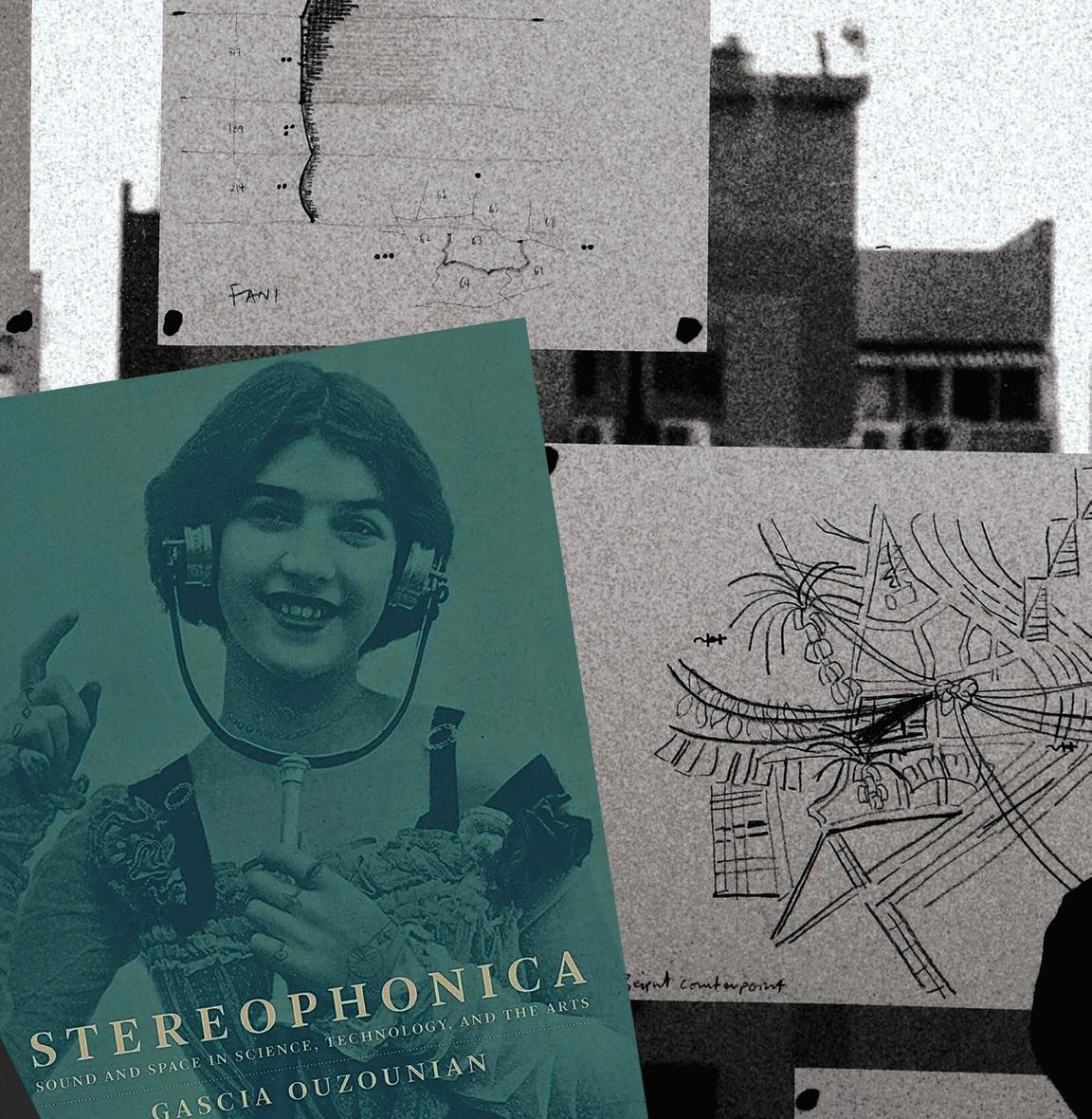
For me, scoring a city can have many meanings; but it’s thinking about how we communicate ideas through notational methods and how that can disrupt some of our practices, whether in music or architecture. It also has a dimension of listening to the city and thinking about the city as a sound world that we’re inhabiting and creating together.
Altounian: You wrote an impressive essay on earwitnessing the Armenian Genocide, titled “Our Voices Reached the Sky: Sonic Memories of the Armenian Genocide.” Could you please describe your work?
Ouzounian: This is a recent piece with open access. If you type the title in your web browser, you can find the article and download it for free. After I went to Yerevan for the first time in 2021, I came across an incredible collection of survivors’ testimonies. As I was reading them, I became interested in the sonic dimensions, what people actually heard. In → 21
17 ԶՐՈՅՑ CONVERSATION Vol. 18, No. 9 [194] ◆ October 2023
Խաչ-բառ
Հորիզոնական
2. (յատուկ անուն) հայ մտածող–
գիտնական, օրէնսդիր, առակագիր, հոգեւորական, մանկավարժ, հասարակական
գործիչ (1130 Գանձակ - 1213 Գոշավանք). Մխիթար ___
Across
յարձակում 18. (յատ. անուն) հայկական
Down
առաքելական միջնադարեան
2. (յատ. անուն) հայ մտածող–գիտնական, օրէնսդիր, առակագիր, հոգեւորական, մանկավարժ, հասարակական գործիչ (1130 Գանձակ - 1213 Գոշավանք). Մխիթար ___
վանական համալիր՝ Արցախի
Շահումեան շրջանի մէջ՝ Թարթառ
5. (գոյ.) ապացոյց, հաւաստիք
5. (գոյական) ապացոյց, հաւաստիք
9. (յատ. անուն) Շուշիի մայր տաճարը, Հայ
առաքելական եկեղեցւոյ Արցախի թեմի
9. (յատ. անուն) Շուշիի մայր տաճարը, Հայ առաքելական եկեղեցւոյ
գետի ձախ ափին 19. (գոյ.) լուսաւորման, ջեռուցումի,
երբեմնի կեդրոնը. Ս. Ամենափրկիչ __________
եկեղեցին
Արցախի թեմի երբեմնի կեդրոնը.
մեքենավարութեան ծառայող նիւթ
13. (յատ. անուն) վանական համալիր Արցախ,
Ս. Ամենափրկիչ __________
եկեղեցին
Մարտակերտ շրջանի Վանք գիւղին
21. (գոյ.) բուն ծննդավայր, մայր՝ բնիկ հայրենիք 22. (յատ. անուն) յայտնի է նաեւ
մօտակայքը. անունը ստացած է Վանք գիւղին
իբրեւ Տերտեր
դիմացը գտնուող բլուրէն
13. (յատ. անուն) վանական համալիր
15. (գոյ.) թշնամին կանխող յարձակում,
Արցախ, Մարտակերտ շրջանի
Վանք գիւղին մօտակայքը. անունը
ստացած
3 100-3 200 մ
1. (գոյ.) եղանակաւոր ձայն, տաղ, քերթուած
1. (գոյ.) եղանակաւոր ձայն, տաղ, քերթուած
3. (յատ. անուն) բուն անունով Վազգեն Օհանջանյան, արցախահայ բանաստեղծ, արձակագիր, թատերագիր, հրապարակախոս. Վազգեն Գարեգինի _____
4. (ածական, գոյ.) ցեղ սպաննող
6. (գոյ.) բռնի գաղթ, տարագրութիւն
3. (յատ. անուն) բուն անունով Վազգեն Օհանջանեան, արցախահայ բանաստեղծ, արձակագիր, թատերագիր, հրապարակախօս. Վազգէն Գարեգինի _____
4. (ածական, գոյ.) ցեղ սպաննող
7. (ածական) վայրենի, գազանային, տմարդի, կատաղի
8. (գոյ.) արտ, գետին, ցամաք, կալուած
10. (գոյ.) յիշատակը յաւերժացնող երկ, կոթող
6. (գոյ.) բռնի գաղթ, տարագրութիւն
11. (բայ) յանցաւոր հանել, պատիժի վճիռ
7. (ած.) վայրենի, գազանային, տմարդի, կատաղի
8. (գոյ.) արտ, գետին, ցամաք, կալուած
10. (գոյ.) յիշատակը
երկ, կոթող 11. (բայ) յանցաւոր հանել,
պատիժի վճիռ արձակել 12. (գոյ.) ցեղի մը բնաջնջում 14. (ած.) յիշատակելի, վաղեմի, վաւերական 16. (գոյ.) մտային տագնապ՝ ստեղծուած գիշերային երազներէ կամ վախազդու պահերէ 17. (գոյ.) մեռնելու վտանգէն ազատում, կրկին ապրում 20. (յատ. անուն) քաղաք Արցախի հիւսիսարեւելեան
25 ԱՅԼԱԶԱՆ ETC. Vol. 18, No. 9 [194] ◆ October 2023
է Վանք գիւղին դիմացը գտնուող բլուրէն 15. (գոյ.) թշնամին կանխող յարձակում,
սկզբնական
կամ Տրտու, գետ Արցախի մէջ, Կուրի աջ վտակը. սկիզբ կ’առնէ Սիւնիքի բարձրաւանդակին
բարձրութիւններէն
Ուղղահայեաց
յաւերժացնող
մասին մէջ՝ Ստեփանակերտէն 75 քմ հիւսիս՝ Թարթառ գետին միջին հոսանքին աջ կողմը՝ 450 մ բարձրութեան վրայ
Crossword 10/2/23, 12:02 PM Oct 2023 - Crossword Labs https://crosswordlabs com/view/oct-2023 1/2
2023
Oct.
արձակել 1 2 3 4 5 6 7 8 9 10 11 12 13 14 15 16 17 18 19 20 21 22 այս նուիրուածխաչբառը է խիզախ արցախահայութեան այս խաչբառին պատասխանները
Խմբագրութեան կողմէ «Թորոնթոհայ»-ը պատասխանատու չէ իր էջերուն
մէջ լոյս տեսած ծանուցումներու բովանդակութեան: Հրատարակութեան մէջի ներկայացուած
կարծիքներն ու տեսակէտները հեղինակներունն
են. «Թորոնթոհայ»-ի խմբագրութիւնը անպայման
չի

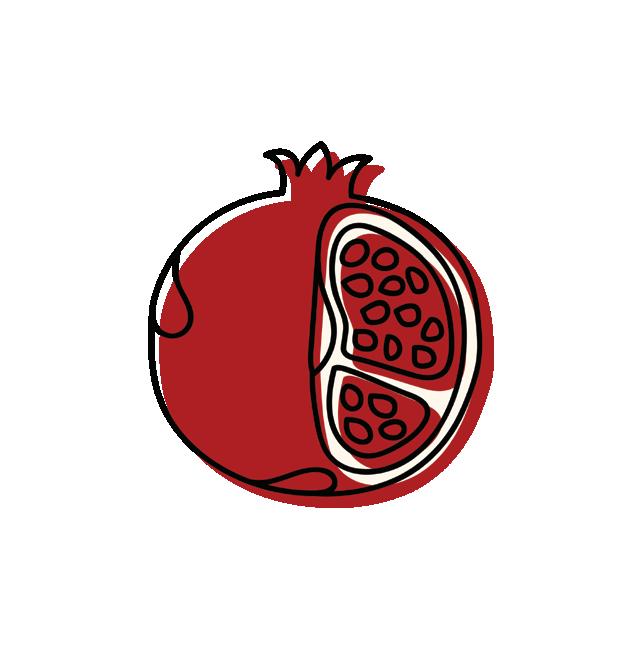
բաժներ զանոնք: Հրատարակութեան մասնակի
կամ ամբողջական վերարտադրութիւնը առանց
հրատարակիչին կամ խմբագիրին գրաւոր
արտօնութեան
Torontohye does not necessarily endorse or evaluate the products, services, or companies advertised. The opinions expressed in this publication are those of the authors. They do not purport to reflect the opinions or views of Torontohye. The reproduction of the material contained in this publication may be made only with the written permission of the publisher or editor. All submissions are subject to editing for space, style, and clarity.
Armen’s
math corner
Junior problem:
Armenia boasts an extensive agricultural landscape, spanning over two million hectares, which accounts for approximately 72 percent of the country’s total land area. The country is renowned for its diverse agricultural produce, including potatoes, grapes, tomatoes, watermelons, apples, and, notably, apricots. In a fruit box, there are precisely 15 apricots, 35 apples, and no other types of fruit. If Raffi blindly selects a fruit from the box, what is the probability that he will pick an apricot?
Senior problem:
Whenever Salpi pours lemon juice from a pitcher into a glass, precisely 10 percent of the lemon juice remaining in the pitcher is used. What is the minimum number of times Salpi must pour lemon juice into a glass to ensure that less than half of the lemon juice remains in the pitcher?

ծանօթ է իր մակագրութեամբ, անունը կը նշանակէ «մատով քաշուած» (մատ-նա-քաշ)
կամ ձեռքով ձեւաւորուած՝ նախքան խմորը թխելը։ Հայաստանի հացերուն մեծ մասին նման, մատնաքաշն ալ կը կտրատուի ձեռքով․ անիկա երբեք չեն կտրեր
Բաղադրութիւնը • 4 գաւաթ ալիւր
• 1 թէյի դգալ աղ
• 1,5 թէյի դգալ թթխմոր
աղը եւ թթխմորը խառնել։
Աւելացնել տաք ջուրը եւ հունցել (շաղել)

մինչեւ դառնայ հարթ եւ փափուկ: Խմորը
դնել ամանի մը մէջ, ծածկել եւ մէկ ժամ
տաք տեղ պահել (իդէալական է վառարանի
մէջ վառած լոյսի տակ): Խմորը եւս մէկ անգամ շաղել, որպէսզի օդը դուրս գայ, եւ նորէն ծածկել 30-40 վայրկեան: Խմորը բաժանել երկու հաւասար մասերու և շարել իւղաթուղթով ծածկուած եփելու ասփէին վրայ (կամ առանձին-առանձին ափսէի վրայ): Առատ ձէթով պատել իւղաթուղթը, դնել խմորին մէկը վրան և ձուաձեւ ձեւ տալ
իրեն: Համոզուիլ, որ խմորին երկու կողմերն
ալ պատուած են ձէթով, առնուազն մէկ
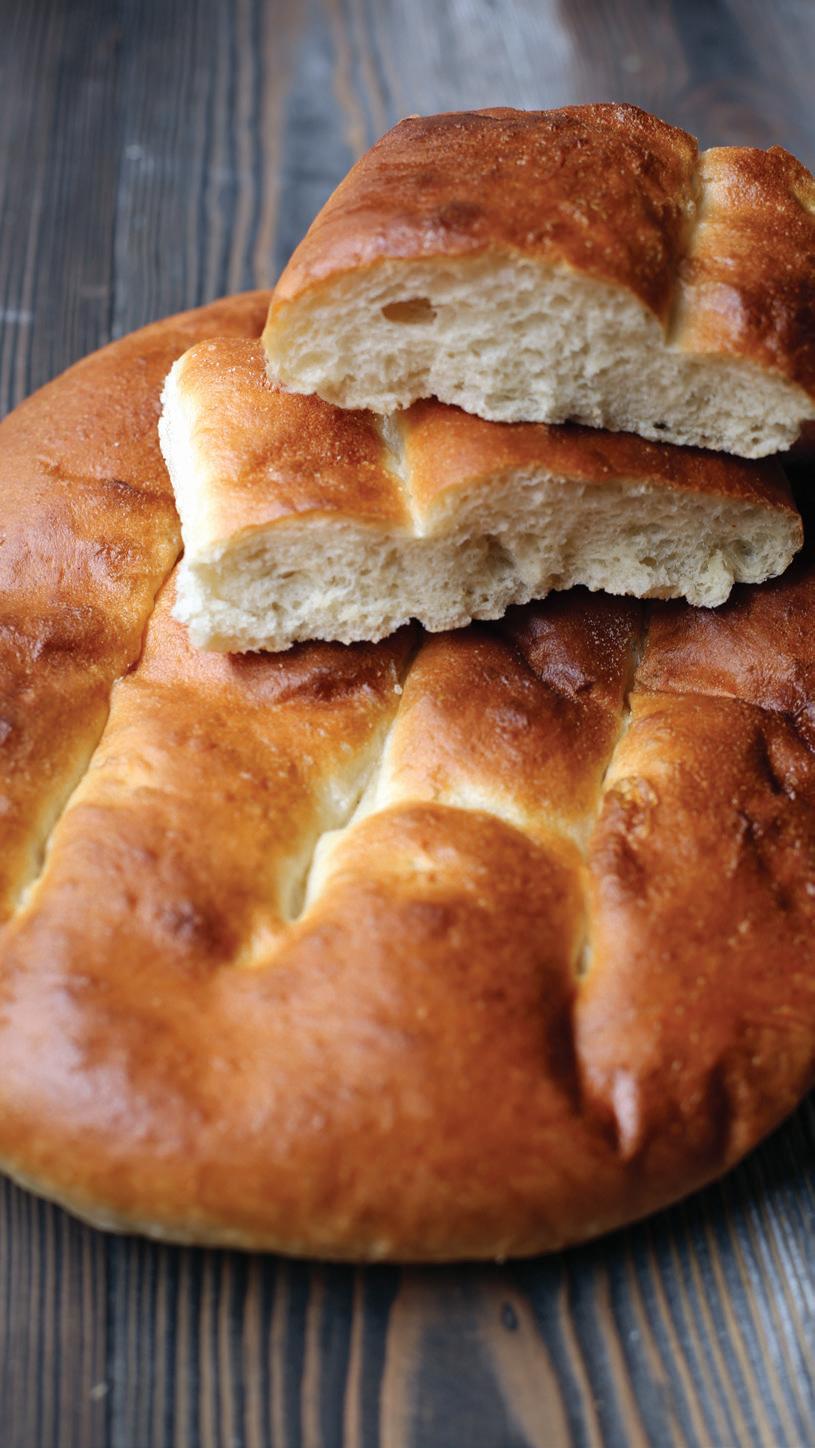
անգամ շրջելով զայն: Ձեռքերով հացի մէջ 2 մատնաչափ եզրագիծ ստեղծել՝ հետեւլով ձուաձեւին։ Գիծերը հնարաւորին չափ խոր ըլլան, որպէսզի դրոշմը տեսանելի ըլլայ եփելէն հետք: Եզրագիծէն ներս, օգտագործելով ձեռքերը, ստեղծել երեք գիծեր՝ դէպի վար (եզրագիծէն դուրս չելլել): Ձգել, որ խմորը հանգստանայ 10 վայրկեան։
Փուռը տաքցնել մինչեւ 400°F (200°C): Նախքան հացը ներս դնելը, եւս մէկ
անգամ անցնիլ դրոշմին
26 ԱՅԼԱԶԱՆ ETC. ԺԸ տարի թիւ 9 [194] ◆ Հոկտեմբեր 2023
արգիլուած է: Մեզի յղուած բոլոր թղթակցութիւններն ու այլ գրութիւնները ենթակայ են որոշ խմբագրութեան: From the editor
Answers to Armen’s math corner Jr. problem: 30 percent, Sr. problem: seven times
(երկու հացի համար)
հայկական խոհանոցը [vegan] Ես ոչինչ գիտէի մատնաքաշի մասին մինչեւ ապրեցայ Հայաստան, ուր ան իր ժողովրդականութեամբ կը զիջի միայն լաւաշին։ Անիկա գրեթէ միշտ ներառուած է հացի կողովներուն մէջ՝ որպէս հացի տարբերակներէն մէկը, որ կը մատուցուի ճաշին հետ՝ իբրեւ յագեցնող տարբերակ: Մատնաքաշը
Մատնաքաշ
Լենային
դանակով։
(instant yeast) • 1,5 գաւաթ գաղջ ջուր • ձէթ՝ վրան քսելու համար Պատրաստութեան եղանակը Ալիւրը,
վրայէն, որպէսզի համոզուիք, որ ան բաւական խորն է: Թխել հացը մինչև բաց ոսկեգոյն դառնայ, մօտաւորապէս 20 վայրկեան: Վայելել թարմ վիճակի մէջ կամ ձգել պաղի եւ դնել տոպրակի մէջ, որ քանի մը օր թարմ մնայ: ֍
Զուլալինառանձնատառը
Dr.



Dr. Mari Marinosyan
Dr. Omayma Fouda
Dr. I. Manhas
Dr. Virgil Huang
Dr. M. Seifollahi
Dr. M. Teitelbaum
Physioworx Physiotherapy 2030 Victoria Park Ave. (south of Ellesmere) North York, ON M1R 1V2 Tel: 416-449-2040
MEDICAL CENTRE & PHARMACY
CASSANDRA HEALTH CENTRE ARMENIAN
Rupert Abdalian Gastroenteology
Family Physician
Pediatrician
Family Physician
Family Physician
Family Physician
Family Physician Դեղագիրներու պատրաստութիւն՝ շաբաթական յատուկ տուփերու մէջ: Արեան ճնշման քննութիւն եւ հետեւողականութիւն՝ անվճար: Շաքարախտի քննութիւն: Դեղերը իրենց հասցէներուն առաքելու անվճար սպասարկութիւն: Տարեցներու 10% զեղչ: Կը յարգենք եւ սիրով կը կատարենք բոլոր ապահովագրական ընկերութիւններու պայմանները: Same day Clinic բաց է շաբաթը 5 օր: Կրնաք բժիշկներու ժամադրութիւն ստանալ եւ տեսնուիլ նո՛յն օրը, հեռաձայնելով՝ 416-331-9111 Դիմեցէք մեզի եւ պիտի դառնաք մեր մնայուն յաճախորդը
SAME DAY CLINIC ONSITE Call for an appointment 416-331-9111
Vartan (PharmD, RPh), Sarkis (BScPhm, RPh) & Maral Balian (PharmD, RPh)
Սիրելի՛ հայրենակիցներ, Արցախի ճգնաժամը ծանր և անդառնալի կորուստներ հասցուց Արցախի առիւծասիրտ
ժողովուրդին: Պատմական Հայաստանի անբաժան մէկ մասնիկը համարուող արծուաբերդ Արցախը այսօր
կ՛ապրի մեր պատմութեան սեւ օրերը: Տասնեակ հազարաւոր հայ ընտանիքներ կը տարհանուին իրենց բնօրրանէն եւ ապաստան կը գտնեն Հայաստանի հանրապետութենէն ներս: Պարզ բառերով կարելի չէ նկարագրել ստեղծուած ծանրակշիռ իրավիճակը, որուն մատնուած
են մեր հայրենակիցները: Անոնք մեր բարոյական աջակցութեան, զօրակցութեան եւ յատկապէս մեր
նիւթական օժանդակութեան կարիքը ունին: ՀՕՄ-ի Գանատայի Շրջանային վարչութիւնը կոչ կ՛ուղղէ բոլորիդ նուիրատուութիւններու միջոցաւ աջակցիլ Արցախի ընտանիքներուն: Ձեր նիւթական օժանդակութիւնը կրնաք ուղարկել.-
1) Վճարագրով՝ ARS Foundation-ին, հետեւեալ հասցէին՝

Armenian Relief Society of Canada
3401 Olivar Asselin, Montreal, QC, H4J 1L5
2) Այցելելով ՀՕՄ-ի Գանատայի Շրջանի կայքէջը՝ https://ars-canada.ca/donations/ սեղմելով Donate Now կոճակը, ապա ընտրելով Aid to Artsakh fund-ը՝
3) Ե-փոխանցումով (E-transfer), ՀՕՄ-ի Շրջ. Վարչութեան ե-նամակի հասցէին՝ ars-canada@bellnet.ca Բոլոր պարագաներուն կը խնդրենք նշել,
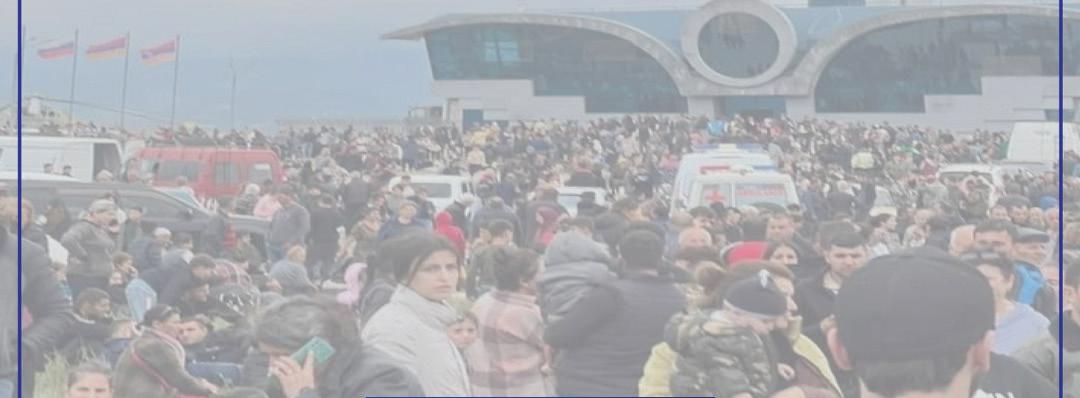
թէ դուք ձեր նուիրատուութիւնները կը կատարէք Արցախի ընտանիքներու օժանդակութեան (Artsakh fund), որուն դիմաց պիտի ստանաք տուրքէ զերծ ստացագիր: ՀՕՄ-ի Գանատայի Շրջանային Վարչութիւն 26 Սեպտեմբեր, 2023 «Օգնենք Արցախի ընտանիքներուն» ԴՐԱՄԱՀԱՒԱՔԻ ԿՈՉ
























 By Dr. Araxie Altounian
By Dr. Araxie Altounian










